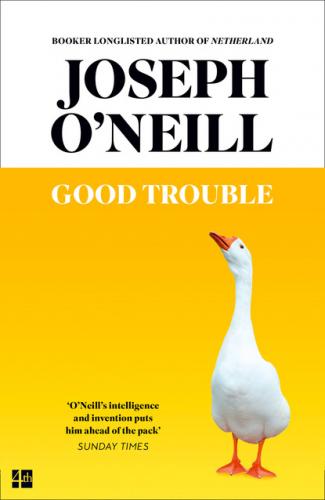Nobody has made a start on the cake or the assorted berries. I say to Jack Bail, “You’re right to be concerned. You have to take care of this.”
“That’s what I did, Doc. Cut a long story short, I caved on the nine hundred bucks and I went to the clinic personally with the documentation. I made sure to get a receipt.”
“That was smart,” Chris says.
Jack Bail says, “I had no option: I got a letter from a debt collection agency. I had to cave. What was I going to do, risk my credit over nine hundred bucks? No, I had to cave. And I don’t even know if they’ve actually disposed of the semen. I’ve got to assume they have. But I’ll never know for sure, will I?”
Jack Bail spends the night on our sofa. In the morning, when Chris and I go down, there is a thank-you note.
Then a year passes and with it a tax season, and we are walking on the beach, and I stop and I say to Chris, “You know what? We haven’t heard from Jack Bail.”
Our beach is a sand and shingle beach. The sand is a common blend of quartz and feldspar. The sand emerges from the ocean, so to speak, and continues inland until quite suddenly shingle replaces it. The shingle, or gravel, consists at first of pebbles, next of a mixture of pebbles and cobbles, and finally almost only of cobbles. This progressive distribution of the beach stones, apparently methodical, is in fact natural: a storm’s waves will force rocks small and large landward, but retreating waves have less power and will move only smaller rocks seaward. The result is a graduated stranding of the rocks, which amass in a succession of steep slopes and berms. Our beach walk begins by scrambling down one berm and then a second, and I always take care to hold Chris’s hand as we go down. Countless large spiders somehow make a life among the cobbles, and my job is to help Chris to put them out of her mind. Out of my mind, too. There are no leg-bugs out here. Leg-bugs are deer ticks. Every evening from May through November, Chris and I must examine each other for ticks. Sometimes we find one.
From the sand beach, the brown drumlin cliffs are exposed to our contemplation. The drumlins have been here since the Wisconsin glaciation. Their crosscut formation is the result of erosion by the ocean and the wind and the rain, a battering that is ongoing, I can testify after two winters here. As the hills retreat, they leave behind rock fragments that will, in due course, form part of the beach. This sort of fact is difficult for me to really understand; it must be said that much of my newly acquired geological knowledge is basically vocabularistic. I can’t recognize feldspar, for example, or a granitic boulder. The Wisconsin glaciation isn’t something I’m really on top of.
Chris and I scan the water, instinctively, I suppose. Sometimes we’ll see a seal’s head. It disappears for a while, then surfaces once more. They have large, cheerful, dog-like heads, these seals. It would feel good to see our warm-blooded kin out there today: this is one of those strolls when the up-close ocean daunts me more than a little, and as we skirt dainty rushes of water, I sense myself situated at the edge of an infinite and relentless eraser. I’m not sure that there’s much to be done about this: awe, dread, wonder, and feelings of asymmetry come with the terrain. There must be something appealing about it, or we’d be elsewhere. Where, though? It’s places that are going places. This part of Nova Scotia, the paleogeographers tell us, was once attached to Morocco.
“I hope he’s OK,” I say to Chris.
“I imagine he is,” she says. She says, “You could always call him.”
Yes, I could call him. But where would it end? I have taught, I once calculated, almost two thousand children.
No seal today. We keep walking. Chris says, “The Last Fez.”
I say, “About the Constantinople mission? We were sworn to silence about that.”
Chris says, “Remember that night we crossed the Bosporus? With that surly boatman?”
“Ali the boatman?” I say. “How could I forget?”
Конец ознакомительного фрагмента.
Текст предоставлен ООО «ЛитРес».
Прочитайте эту книгу целиком, купив полную легальную версию на ЛитРес.
Безопасно оплатить книгу можно банковской картой Visa, MasterCard, Maestro, со счета мобильного телефона, с платежного терминала, в салоне МТС или Связной, через PayPal, WebMoney, Яндекс.Деньги, QIWI Кошелек, бонусными картами или другим удобным Вам способом.
